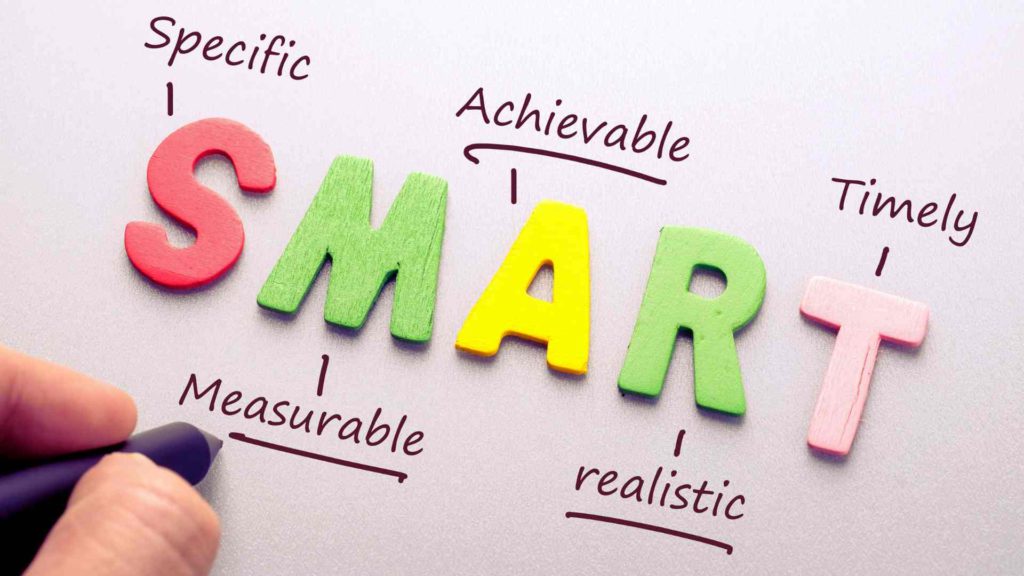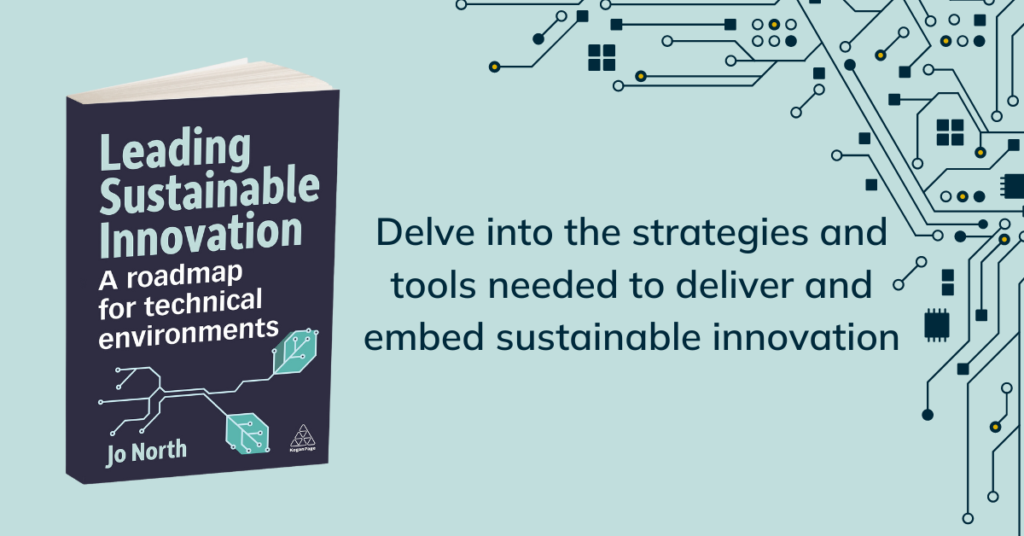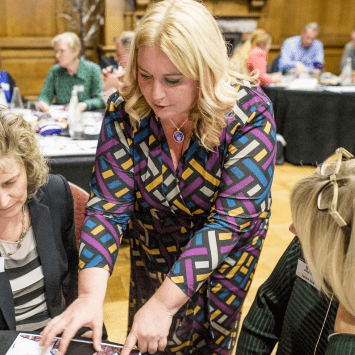Posted in Blog, Influencing people, Innovation Culture, Lead Your Team, Strategy by Jo North
Advanced Goal Setting for Cross-Functional Teams
Of course, cross-functional teams can address complex problems by combining different perspectives. You’ve probably run a few cross-functional projects and used frameworks such as SMART goals or agile methodologies. The question is, how do you advance beyond the basics to create a truly effective cross-functional team in a complex business environment? Here in Advanced Goal Setting for Cross-Functional Teams, I’ll share higher-level strategies for achieving better results and aligning different departments around a shared goal.
If you’re tired of the usual suggestions—like “have regular check-ins” or “use communication tools”—and need practical, next-step tactics, this is for you. We’ll cover integrating strategic goals with advanced resource allocation, building a collaborative culture that goes beyond polite teamwork, and using data in real time so that team leaders can make better strategic decisions.
And If you’d like more in-depth guidance, real examples, and ready-to-use templates for these approaches, my book Leading Sustainable Innovation: A Roadmap for Technical Environments offers step-by-step methods, frameworks, and toolkits. It explores advanced topics in far greater detail, giving you practical solutions to help you plan and complete more ambitious, sustainable projects.

1. Align Your Strategic Initiatives with Tactical Execution
Bridging Organizational Structure and Daily Work
In most organizations, strategic goals remain at the top, while project teams at the bottom try to complete tasks without clear context. This leads to misaligned priorities and a drop in employee engagement. To fix this, and develop more advanced goal setting for cross-functional teams, I recommend creating a “strategy-to-execution blueprint.”
Here’s how:
- Start by defining specific objectives that tie directly to strategic initiatives across the entire organization.
- Map these objectives to each functional area—such as your marketing team, product development team, and customer support team—so everyone knows why their role matters.
- Use an OKR template (OKRs are suggested by sources such as Harvard Business Review) to connect daily work to key results. Each functional area sets advanced metrics that support the main vision and allow you to track progress.
Advanced Tip: Incorporate a short monthly or bi-monthly calibration meeting where team leaders align on any shifts in strategy. This helps different teams react quickly and keeps them moving in sync with bigger picture changes.
2. Establish a Structured but Flexible Cross-Functional Collaboration Framework
Going Beyond Traditional Project Management
Regular project management often assumes each task belongs to one department. But cross-functional work demands more fluid collaboration across various departments. When different goals conflict or overlap, teams can get lost without a transparent framework. Use these tips for more advanced goal setting for cross-functional teams:
Consider an integrated governance model:
- Clear Goals: Each cross-functional project starts with documented specific goals linked to a common goal.
- Collaborative Committees: Create small “governance squads” made up of cross-functional team members who rotate ownership of specific project milestones. This prevents any single department from dominating.
- Rapid Conflict Resolution: Use short, dedicated conflict resolution huddles to keep tension from escalating. The project manager or a designated facilitator can guide the decision-making process when resource allocation disputes emerge.
Advanced Tip: Equip these governance squads with the right tools to capture real-time updates and orchestrate cross-team collaboration. This ensures that each function sees exactly how their actions affect other functional areas, reducing the risk of siloed efforts.
3. Adopt a Real-Time Data Ecosystem
Moving Beyond Basic KPIs
If your cross-functional collaboration relies on spreadsheets updated once a month, you risk reacting to issues too slowly. High-performing teams rely on a real-time data ecosystem that integrates digital tools, dashboards, and analytics.
What this looks like:
- Live Dashboards: Centralize your key performance indicators so everyone—from the sales team to the customer support team—can see metrics updating in real time.
- Event-Driven Alerts: When any metric deviates from expected thresholds, the entire team or specific functional areas get immediate notifications.
- Root-Cause Analysis: Pair these alerts with rapid investigative tools, so cross-functional team members can dive into the details right away.
Advanced Tip: Combine structured metrics (e.g. conversion rates) with unstructured feedback from user surveys or internal updates. This helps you interpret data holistically and make well-rounded strategic decisions.

4. Resource Allocation 2.0: Dynamic Reassignment of Diverse Skill Sets
Minimizing Delays and Skill Underuse
A common challenge in cross-functional teams is the inefficiency of resource allocation. You might have a specialist in data analytics sitting idle in the marketing team, while the product development team desperately needs those skills to finalize a new product feature.
Try a “skill swap” model:
- Publish a live “skill inventory” of all cross-functional team members, detailing each person’s unique capabilities.
- Give team leaders access to a dynamic scheduling tool, so they can temporarily assign specialists from different departments to short tasks.
- Build an expectation of advanced “skill sharing,” where employees rotate across project teams based on immediate demand and their diverse expertise.
Advanced Tip: Offer micro-incentives for employees who contribute their skill sets to other areas, such as recognition in company-wide meetings or a small bonus. This signals that cross-team collaboration is integral to high performance, not just a nice-to-have.
5. Integrate Emotional Intelligence into Communication Tools and Processes
A More Intentional Approach to Soft Skills
Effective communication isn’t just about scheduling more Zoom calls or Slack updates. It also means acknowledging different backgrounds, different perspectives, and the need for empathy.
Here’s a deeper method:
- Emotional Intelligence Routines: Train project managers and team leaders in collaboration skills, and to read between the lines.
- Open Communication Channels with Guidelines: Provide a short framework (e.g., always include the “why” behind any request) so cross-functional project members know how to communicate context.
- Regular Check-Ins Focused on Person, Not Just Task: Use short but targeted questions about challenges, workload, or concerns. This ensures conflict resolution occurs before morale dips.
Advanced Tip: Use a “communication matrix” where each functional area states its communication preferences (e.g., synchronous calls vs. async messages), so different departments can coordinate effectively without friction.

6. Expand Collaborative Culture with Targeted Cross-Team Initiatives
Creating Shared History and Trust
A collaborative culture doesn’t happen overnight. Cross-functional collaboration often stalls because people haven’t worked with these other departments enough to trust them.
High-Level Initiatives:
- Hackathons or Sprints: Organize a short cross-functional project—a new product prototype, a customer experience improvement, or a cost-savings brainstorm—where employees from different teams solve problems together.
- Reverse Mentoring: Pair senior leaders from one function (e.g., finance) with rising stars from another (e.g., customer support team). Each side learns from the other’s daily realities.
- Shadowing Programs: Let a product development team member “shadow” the marketing team to see how leads are handled, and vice versa. Insights from different perspectives often spark innovative solutions.
Advanced Tip: Always tie these initiatives to specific goals or key results so they don’t feel like extra work. For example, show how a two-day hackathon directly affects strategic goals around boosting customer satisfaction.
7. Rethink the Decision-Making Process for Better Results
Escaping the One-Leader Show
Strong leadership doesn’t mean that you alone dictate the solution. An effective cross-functional team involves a broader decision-making process, especially when dealing with major changes or big resource moves.
Collaborative Decision Panels:
- Panel Formation: For each strategic decision, assemble a panel of key players from relevant functional areas.
- Input Cycle: Each participant presents both data (key performance indicators, user metrics) and a real-time analysis of risks or benefits.
- Consensus with Accountability: While the group aims for consensus, specify an ultimate owner—a project manager or executive—who finalizes the call if disagreements persist.
Advanced Tip: Log every decision’s rationale in a shared document. If disagreement arises later, you can revisit the context and reaffirm why certain paths were chosen, improving transparency across different teams.
8. Measure the True Impact on Customer Experience
Moving Beyond Internal Success Metrics
The entire organization exists to meet customer needs, but cross-functional collaboration can veer off track if no one measures how actions improve the end user’s experience.
Elevated Customer-Focused Tactics:
- Experience Maps at Cross-Functional Checkpoints: After each major project milestone, evaluate how the changes might affect a customer’s journey. This holds all functional areas accountable.
- Customer-Focused Key Results: A shared goal related to customer satisfaction should appear in each departmental OKR—so everyone sees the direct link between their daily work and the customer experience.
- Customer Feedback Integration: Your marketing team or customer support team should push real time feedback directly into the cross-functional project channels, prompting immediate adjustments.
Advanced Tip: Consider adopting “customer experience audits,” where an external panel or internal reviewers from outside the specific project assess the user impact. This fresh perspective often uncovers overlooked gaps.
9. Use Structured Retrospectives to Aim for Continuous High Performance
Making Regular Feedback Actionable
You probably know about retrospectives, but I see them used superficially in many organizations. To get genuine improvement, you need a deeper reflection method.
Deeper Retrospective Approach:
- Structured Feedback Tiers: Invite feedback from multiple levels—team leaders, cross-functional team members, and even stakeholders outside the project.
- Focused on Root Causes: Don’t just note what went wrong or right. Dig into “why” it happened. If resource allocation caused delays, was it due to competing strategic initiatives or insufficient planning?
- Actionable Commitments: End each retrospective by identifying at least three changes you’ll implement immediately. Track progress on these changes in your next retrospective.
Advanced Tip: Combine retrospective insights with broader data. If your marketing team highlights lead quality issues, cross-reference that complaint with the product development team’s backlog or remote teams’ availability. Patterns may emerge that guide new cross-team collaboration tactics.
10. Consolidate and Evolve for True Cross-Functional Success
Bring It All Together
Achieving an effective cross-functional team dynamic isn’t about one or two quick hacks. It’s a continuous process of aligning specific goals, refining your communication channels, leveraging collaborative tools, and ensuring emotional intelligence is part of your daily work. By merging advanced collaborative team working, resource allocation methods, real-time dashboards, and deeper retrospective practices, you’ll create high-performing teams with a genuine sense of shared ownership.
Your Next Step
If you’ve tried basic steps without the desired outcomes, build in some of the methods for advanced goal setting for cross-functional teams above. Treat your cross-functional projects like living organisms that adapt to changing market conditions and internal shifts. Invest in digital tools that help you track progress with precision, but also pay attention to the human side, building trust and open communication between diverse teams.
By applying these more advanced approaches, you’ll see strong leadership emerge across different departments, employees will feel their skill sets are recognized, and your value proposition and customer satisfaction metrics will reflect the payoff of a truly collaborative effort.
For a deeper look at these techniques and many more high-level strategies, pick up my book Leading Sustainable Innovation: A Roadmap for Technical Environments. It’s packed with advanced methods, real-life case studies, and templates you can use right away. If you’re serious about taking your sustainable innovation projects to the next level, this is the resource you need.

Final Thoughts on Advanced Goal Setting for Cross Functional Teams
You already know that advanced goal setting for cross-functional teams can help you solve complex problems and generate innovative solutions. The real challenge is raising the level of sophistication in how you link your strategic goals to daily execution, handle conflict resolution, and measure success. If you apply the advanced practices here, you’ll move beyond “decent cooperation” and cultivate an effective cross-functional team approach that elevates the entire organization’s impact—on both employee experience and the customer experience.
I’m confident that by integrating these methods, you’ll bring out the full potential of diverse skills and different perspectives, create better results, and achieve the specific objectives that truly matter in your complex business environment.
Additional Support
If you’d like to speak directly to me, or to one of my team, about exploring some hands-on consultancy support or facilitation for your organization, we’d love to hear from you. Please get in touch here.


